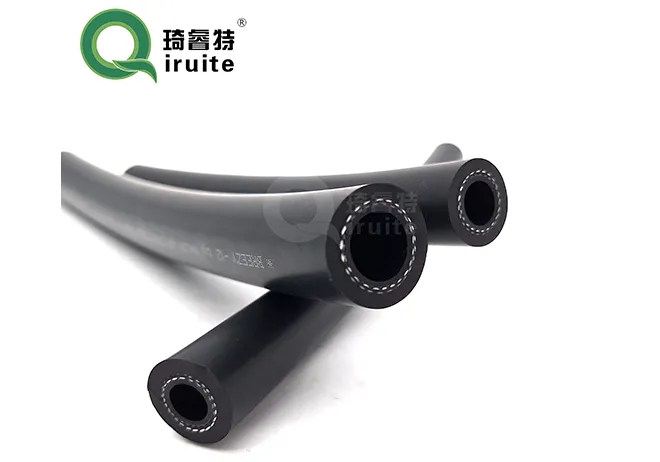Pipe Joint Connections and Their Importance in Piping Systems
Understanding Pipe Coupling Joints Essential Components in Fluid Transportation
In the world of engineering and construction, pipe coupling joints play a crucial role in the transportation of fluids across various industries. These fittings, which connect two or more pipes, ensure the integrity and efficiency of fluid transfer in systems such as plumbing, oil and gas pipelines, and chemical processing. This article explores the different types of pipe coupling joints, their applications, and the factors to consider when selecting the appropriate joint for a particular application.
What Are Pipe Coupling Joints?
Pipe coupling joints are components designed to connect sections of pipes, facilitating the safe and efficient transfer of liquids and gases. These joints can be categorized into several types, including but not limited to, threaded couplings, welded couplings, and flanged couplings. Each type has distinct features and benefits that suit various operational needs.
Types of Pipe Coupling Joints
1. Threaded Couplings These are among the most common types of pipe joints. They involve the use of male and female threads to connect two pipes. Threaded couplings are typically made from materials such as steel, brass, or plastic, making them versatile for various applications. Their ease of installation and disassembly makes them a favorite in plumbing applications, though they may not be suitable for high-pressure systems.
2. Welded Couplings Welded joints provide a permanent connection between pipes. This method involves melting the pipe ends and fusing them together, creating a robust and leak-proof bond. Welded couplings are ideal for high-pressure applications and are commonly used in industries like oil and gas, where strength and durability are paramount.
3. Flanged Couplings Flanged joints consist of two separate pieces with flanges that are bolted together, allowing for easy access and maintenance. This type is particularly useful when a disassembly of the piping system is required. Flanged couplings are commonly seen in large-scale industrial applications, such as water treatment and chemical processing.
4. Compression Couplings These joints use a compression fitting to connect two pipes, without the need for welding or threading. They are designed to create a tight seal that prevents leaks, making them a popular choice for residential plumbing systems. Their ease of installation makes them a go-to choice for DIY enthusiasts.
5. Push-Fit Couplings Modern technology has given rise to push-fit couplings, which allow for quick and easy installation without the need for tools. These couplings are designed to create a strong seal simply by pushing the pipe into the fitting. Their convenience and efficiency make them ideal for both professional and residential applications.
Applications of Pipe Coupling Joints
pipe coupling joint

Pipe coupling joints find applications in a wide range of fields. In residential plumbing, these joints are essential for connecting pipes for water supply systems, sewage systems, and gas lines. In the oil and gas industry, robust welded joints are critical for transporting crude oil from drilling sites to refineries. Furthermore, in the chemical processing sector, flanged joints allow for easy access to piping systems involved in manufacturing processes, ensuring maintenance and safety compliance.
Factors to Consider When Choosing Pipe Coupling Joints
When selecting a pipe coupling joint, several factors must be considered to ensure the system operates efficiently and safely
1. Material Compatibility The materials of both the pipes and the coupling joint must be compatible to avoid corrosion and degradation over time.
2. Pressure Rating Different coupling joints are rated for different pressure levels. It is crucial to select a joint that can withstand the maximum pressure expected in the system.
3. Temperature Resistance The temperature of the transported fluid can affect the choice of coupling joint. Some materials may not perform well under extreme temperatures.
4. Ease of Installation Depending on the project’s complexity and timeline, the ease of installation may influence the choice of coupling joint.
5. Maintenance Requirements Some joints, like welded couplings, require more sophisticated tools and skills for maintenance, while others, like flanged joints, allow for quick access.
Conclusion
Pipe coupling joints are integral to the functioning of fluid transport systems across various industries. Understanding the different types of joints and their applications can significantly impact the efficiency and safety of fluid transportation. By considering factors such as material compatibility, pressure ratings, and ease of installation, engineers and technicians can make informed decisions that ensure the integrity of their piping systems. As technology continues to evolve, the development of newer, more efficient coupling solutions will undoubtedly enhance the reliability of fluid transportation for years to come.
-
Ultimate Spiral Protection for Hoses & CablesNewsJun.26,2025
-
The Ultimate Quick-Connect Solutions for Every NeedNewsJun.26,2025
-
SAE J1401 Brake Hose: Reliable Choice for Safe BrakingNewsJun.26,2025
-
Reliable J2064 A/C Hoses for Real-World Cooling NeedsNewsJun.26,2025
-
Heavy-Duty Sewer Jetting Hoses Built to LastNewsJun.26,2025
-
Fix Power Steering Tube Leaks Fast – Durable & Affordable SolutionNewsJun.26,2025

